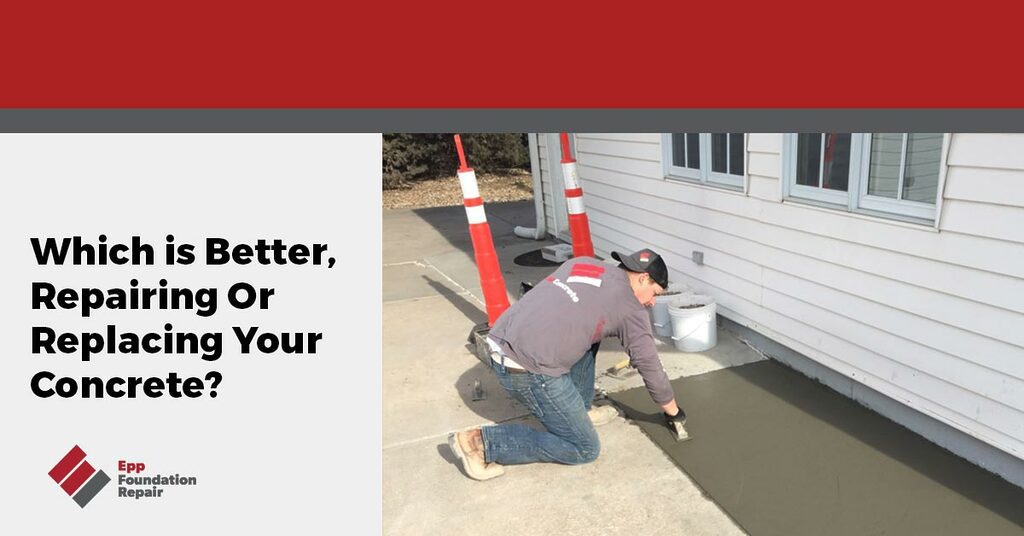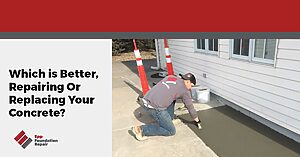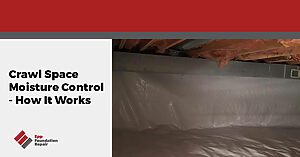We all can agree that cracked and unleveled concrete is unsightly. But some fail to realize the more severe ramifications. An uneven slab can become a tripping hazard and a liability to homeowners. Cracked concrete is more susceptible to water damage and will only worsen over time, leading to more costly repairs. And spalling concrete, especially along your foundation, can jeopardize the integrity of your home.
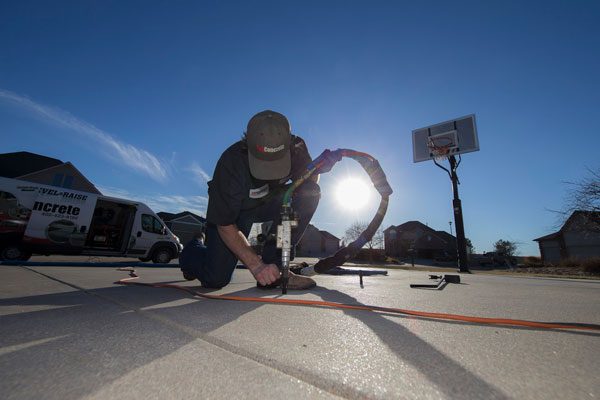
But which is better, repairing or replacing your concrete? While some may think that concrete replacement is always best, you may be surprised to learn that repairing your concrete may be the best option. Keep reading to learn about the common problems with concrete, what causes them, the advantages and disadvantages of concrete repair and replacement, and which option you should pick for your particular scenario.
Common Concrete Problems and Their Causes
Cracking and Unlevelness
Despite its strength and versatility, concrete is prone to cracking and shifting. Consider some of the causes:
- Shrinkage – After the concrete is mixed and poured, it undergoes a curing or hardening process. During that process, moisture is released, and the concrete begins to shrink. The shrinkage often stresses the concrete and causes cracks along the surface. If the mix contains too much water, you will notice more and larger cracks.
- Premature Drying – If the concrete’s surface dries too quickly, perhaps because of hot temperatures, crazing cracks can form. Crazing cracks look like desert soil or a spider’s web.
- Expansion – During the hot summer months, concrete tends to expand. If the concrete starts to push against anything, like another slab or a wall, it can cause cracking.
- Freeze-Thaw Cycle – When the ground below a concrete slab freezes and thaws, it causes the concrete to move, shift, and eventually crack. Also, if water has penetrated the concrete, the water within the concrete is subject to the same freezing and thawing cycle. This can cause the concrete to crack as well.
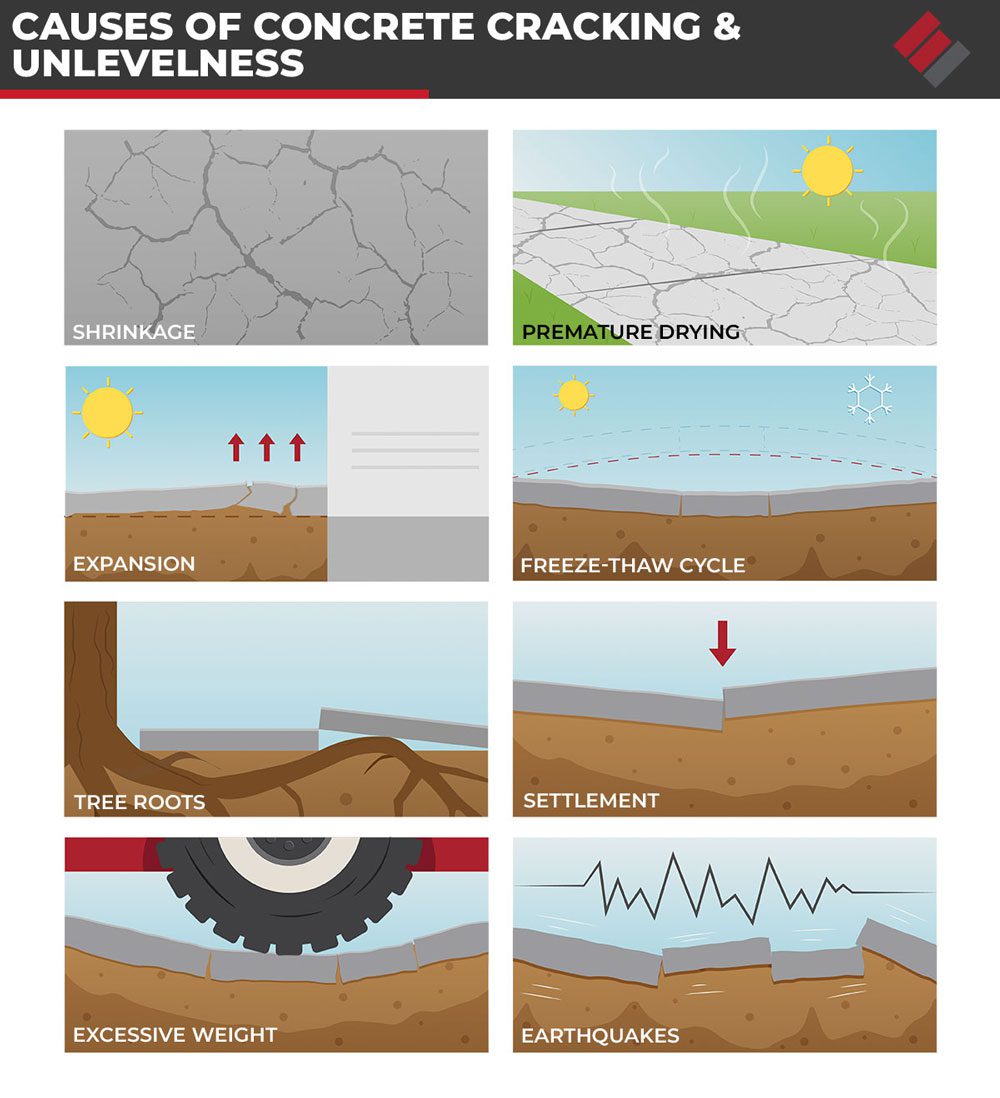
- Tree Roots – Strong tree roots can push up and crack a concrete slab. We’ve all seen examples of this.
- Settlement – The concrete slab can begin to settle if the soil beneath the concrete is poorly compacted, has poor water drainage or has eroded over time. Settling causes cracking and an uneven surface.
- Excessive Weight – If the soil beneath the concrete slab is not strong enough, the slab can break when something heavy sits on it repeatedly, like a parked car.
- Earthquakes – Strong seismic activity can cause concrete to crack and become unlevel.
Spalling
Spalling is the disintegration of concrete’s surface layer. You may notice that the concrete is flaking, cracks are forming, and pits are progressively worsening. Common causes of concrete spalling include:
- Freeze-Thaw Cycle – As mentioned above, when water penetrates the concrete, the water expands and contracts during the freeze-thaw cycle, weakening the concrete and eventually spalling. This process worsens with deicing salts, increasing the frequency of freeze-thaw cycles.
- Corroded Rebar – If the rebar within the concrete gets exposed to water or air, it can rust and expand, eventually causing the concrete to spall.
- Poor Workmanship – If the concrete is improperly prepared, cured, or finished, the concrete will be more susceptible to spalling.
What Are the Advantages and Disadvantages of Concrete Repair and Replacement?
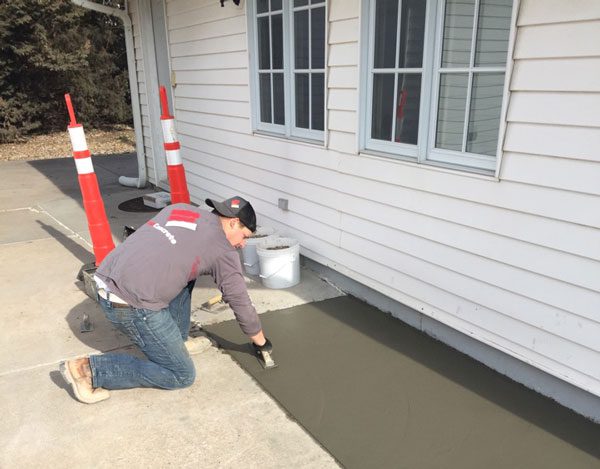
Deciding whether to repair or replace your concrete is a big decision, mainly depending on the size and location of the damaged concrete. For example, deciding whether to repair or replace a section of sidewalk is far different from considering how to fix your spalling basement. Before making big decisions, weighing the pros and cons is best. Consider the following:
Pros and Cons of Concrete Repair
Pros:
- Faster – Most concrete repair options are fast, taking only a few hours from start to finish, and the slab can be used almost immediately.
- Cheaper – Repairing your concrete can save up to 50% of the replacement cost.
- Less Invasive – Repairing your concrete prevents the need to tear up the existing concrete and bring in large equipment that can damage your lawn.
- Strengthen Existing Concrete – In the case of repairs using polyurethane foam injections to level cracked and uneven slabs, the waterproof injection increases the concrete’s strength-to-weight ratio while compacting the soil below, making your concrete stronger and more stable than before.
Cons:
- Not suitable for all situations – Some concrete is beyond repair.
- Cannot fully predict the outcome – While our experienced team cannot guarantee a perfectly level or color-matched repair, our experts can provide a few highly likely outcomes and help you attain a repair you can be proud of.
- Cannot eliminate cracks – Cracks can only be filled and covered, not removed. However, our crack repair solutions have a “NO LEAK” guarantee, making the cracks as good as they are gone.
Pros and Cons of Concrete Replacement
Pros:
- Fresh Start – When you pour fresh concrete, it is like a new beginning. Everything is uniform, and you can incorporate maintenance techniques to keep your concrete looking good.
- Customizable – If you want to change your driveway’s layout or replace your steps with a ramp, then replacing the concrete may be the way to go.
- Predictable – As long as you choose a reputable contractor, you can be confident in attaining the exact outcome you want.
Cons:
- Expensive – Concrete replacement is much more costly than repairing it.
- Longer, more invasive process – A concrete driveway can take one to three days from demolition to installation. Afterward, you must let it cure for at least another two days before touching it and up to 28 days for complete curing. Removing and installing new concrete is also invasive, with large, loud, and heavy equipment that can interfere with your family’s routine and landscaping.
- Resettling – Concrete will naturally settle over time, usually within the first five years of installation. Unfortunately, there is no guarantee that it will settle uniformly, potentially warranting future repairs.
- Mismatched coloring – If you try mixing new slabs with old ones, you will notice a mismatched checkerboard appearance. While some do not mind, others are annoyed by the irregularity.
When Can You Repair Concrete?
Most times, damaged concrete can be repaired. Whether it is your driveway, steps, garage floor, or basement wall, we have a variety of repair solutions. For cracks that are under 0.25 inches wide, we use epoxy injections to create a strong, waterproof seal. If your concrete slab has settled unevenly, we can use a method called polyjacking to level the slab.
What Is Polyjacking?
Polyjacking is a concrete leveling solution that uses polyurethane foam injections to lift and level a sunken slab. It can be used for driveways, garages, basement floors, and more. It involves a simple six-step process:
- Assess the area to determine the cause of the damage and the best place to inject the foam.
- Drill dime-sized holes in the concrete as injection sites.
- Carefully inject the right amount of polyurethane foam to level the slab.
- Allow the foam to expand and harden. This process takes about 15 minutes.
- Fill in the drilled holes and seal any cracks.
- Clean up the work site.
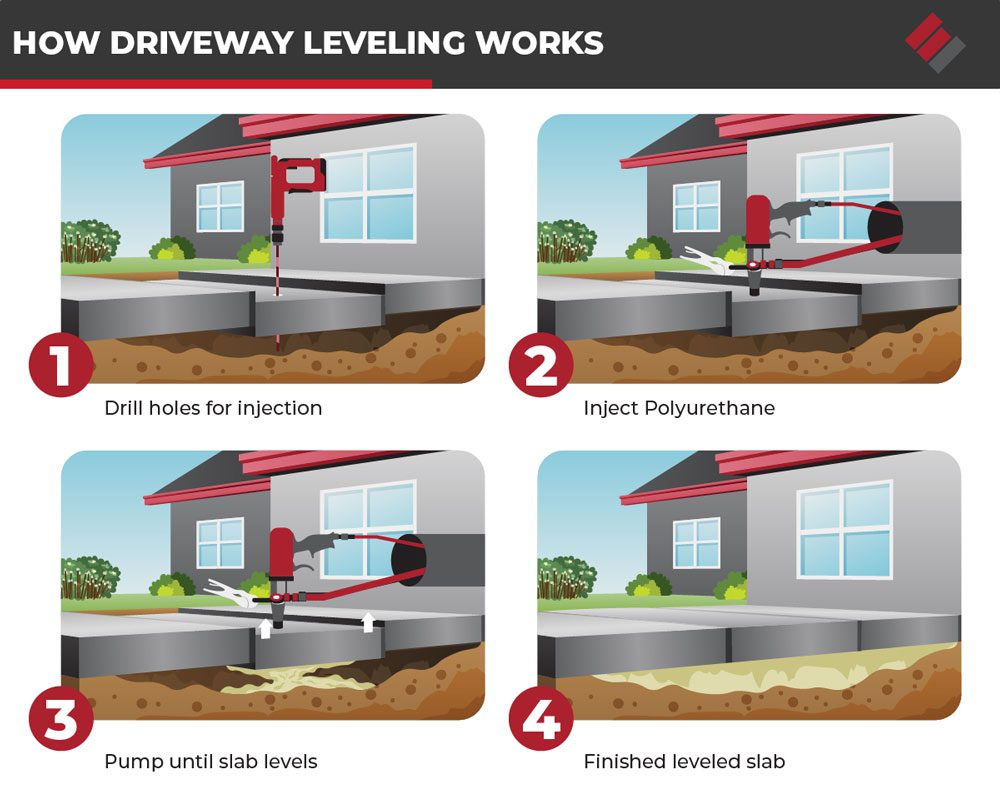
When Should You Replace Concrete?
Some concrete is beyond repair and requires replacement. Review the following scenarios:
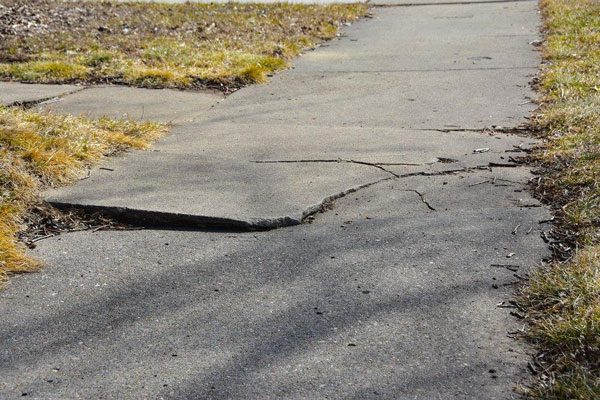
- Extensive cracking and potholes – The slab should be replaced if the cracks are more than 0.25 inches wide or the slab has sunken more than eight inches.
- Raised slab – Polyjacking can raise a sunken slab but cannot lower it. Ask a professional if it is difficult to tell if the slab has risen or fallen.
- Damaged by tree roots – Unfortunately, if tree roots have cracked and raised the concrete, it will need to be replaced.
- Poor base – If the base below the concrete was poorly installed, the concrete may need to be replaced and the base modified.
- Concrete is older than 30 years – Concrete in high-traffic areas like driveways and sidewalks usually has a lifespan of about 25-50 years. While an older slab can be repaired, replacing it may make better financial sense.
- Spalling – Repairs for spalling concrete are usually temporary; hence, it is recommended to replace the concrete instead.
Schedule your free concrete leveling and repair inspection today. Our experts will assess the damage and determine the best solution for your family. Don’t pay to replace your concrete when our experts can repair it for half the price. We service Nebraska, Iowa, Kansas, and Missouri.

